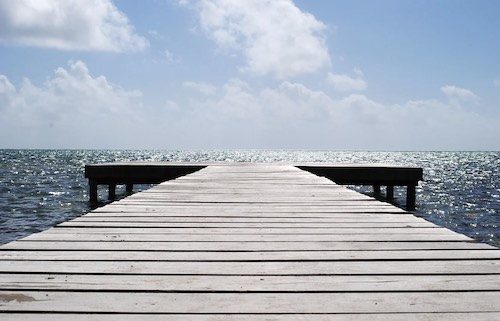
RSN: Residents of Belize’s Caye Caulker Island have begun using solar power to harvest fresh water from the air after shipments to the island were delayed due to the coronavirus (COVID-19) pandemic. Islanders are using 23 solar-powered hydropanels from Zero Mass Water to convert airborne moisture into potable water.
Caye Caulker Island, which sits just 20 miles off the coast of Belize, was formed by a mix of sand and limestone coral, which does a relatively poor job of filtering salt from the water that’s drawn into the ground from the sea. As a result of this, the island’s residents have relied mostly on shipments of bottled water that came by cargo ship from the mainland.
Belize reported its first case of COVID-19 on March 23. According to the Johns Hopkins University tally, it currently has 18 cases and two deaths as of reporting time. The country declared a state of emergency on April 1, closing its borders and preventing people from going outside between the hours of 8 p.m. and 5 a.m. for 30 days.
The declaration has negatively impacted Caye Caulker. Aside from curbing tourism, the island’s main source of revenue, the measures have delayed shipping, preventing the island from getting its regular deliveries of water. more

HEY! I have an idea…. Let’s all go live in a utopia that lacks fresh drinking water! Sounds more dystopian.
Whatever happened to desalination?
Crackerbaby, it sounds like a reboot of “Mosquito Coast”.
Did You Know.
Part one of a series.
You can make a small hole in the ground about the depth of a bean can.
Then piss in the hole around the perimeter.
Then place said can in centre of hole and cover hole with plastic with centre of plastic set to drain into can.
Wait for a sunny hot day.I ran out of typing space.
Did You Know.
Dig a hole in the ground about the depth of a bean can. Piss around perimeter of hole,place can in hole and cover with plastic with centre of plastic formed to drain into can.
Wait a few hours on a nice sunny hot day and you will have water that is drinkable.I shit you not.
This may work best in a dessert environment but i would like to hear from some of the Northeasters that try this.
Zero Mass seems to have done some aggressive internet sanitation of criticism. I recall, as recently as last year, a number of very negative articles about them and their ridiculously expensive product. Just now, I had to go 14 pages into a Google search to find just one negative reference.
Spending $5,000 for a unit that will only produce up to 5 liters of water a day, under ideal conditions, only makes sense when you are spending other people’s money. Zero Mass is working on the Elon Musk business plan.
Zero Mass is a solar powered dehumidifier. An air conditioner will do the same. It will only work to maximum efficiency, which is not great, if the air is very humid. In a dry climate, where one is most likely to be short of drinking water, you’re not going to get much water out of the air.
For a desert island with abundant supplies of salt water surrounding you, building simple and inexpensive solar stills would make far better sense. With a scavenged window or glass door, a solar still could be made that produces double the Zero Mass unit’s ideal output, more, with some simple tweeks.
If you want to spend money, get a high tech solar powered desalinator. For the money you would spend to get two Zero Mass units, you could get an RO unit, and solar panels, that would produce 50 times the ideal maximum daily output of those two units.
Try making and using solar stills like we used to make in science class. Low-tech and low maintenance.
Forget the can. Just take it straight from the tap, like a real man.
” … the average American consumes around 300 gallons of water daily … ”
I average around 30 during the summer, less in the winter.
Maybe I should leave a faucet running or something so I can become more like an average American?
Well it looks like they are going to have to purchase 2 droids to help with the moisture vaporators at this rate…